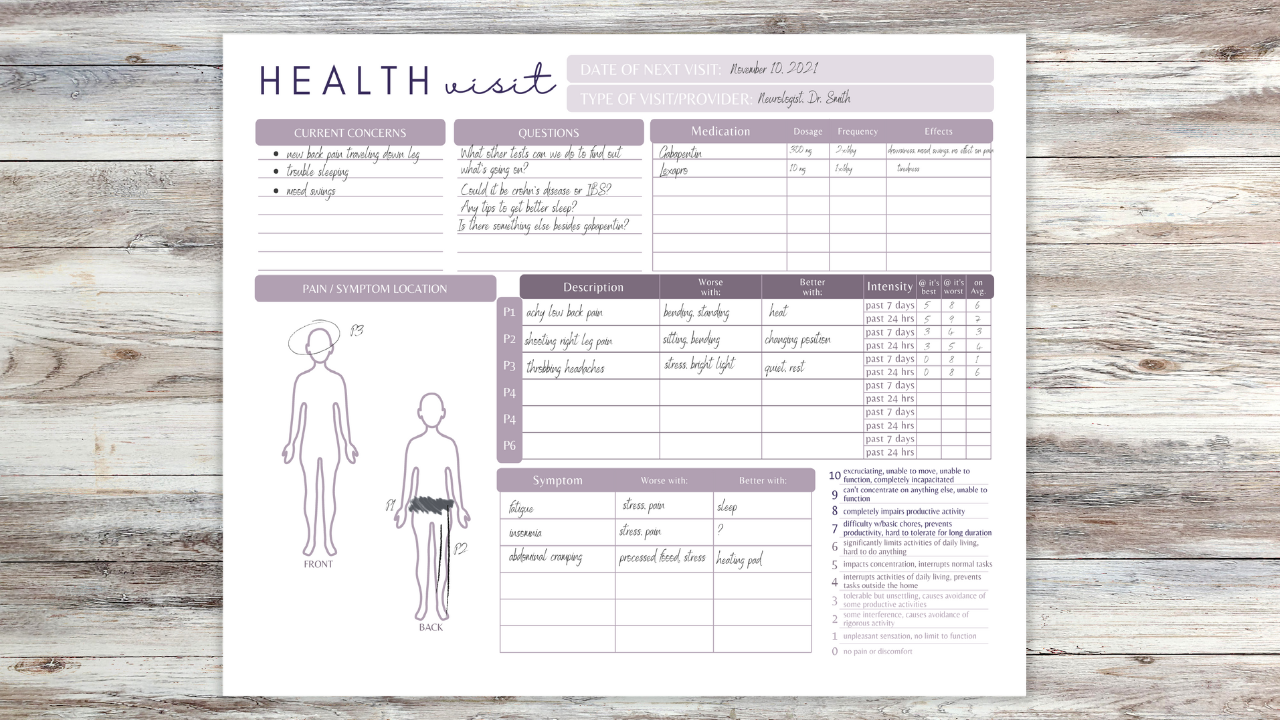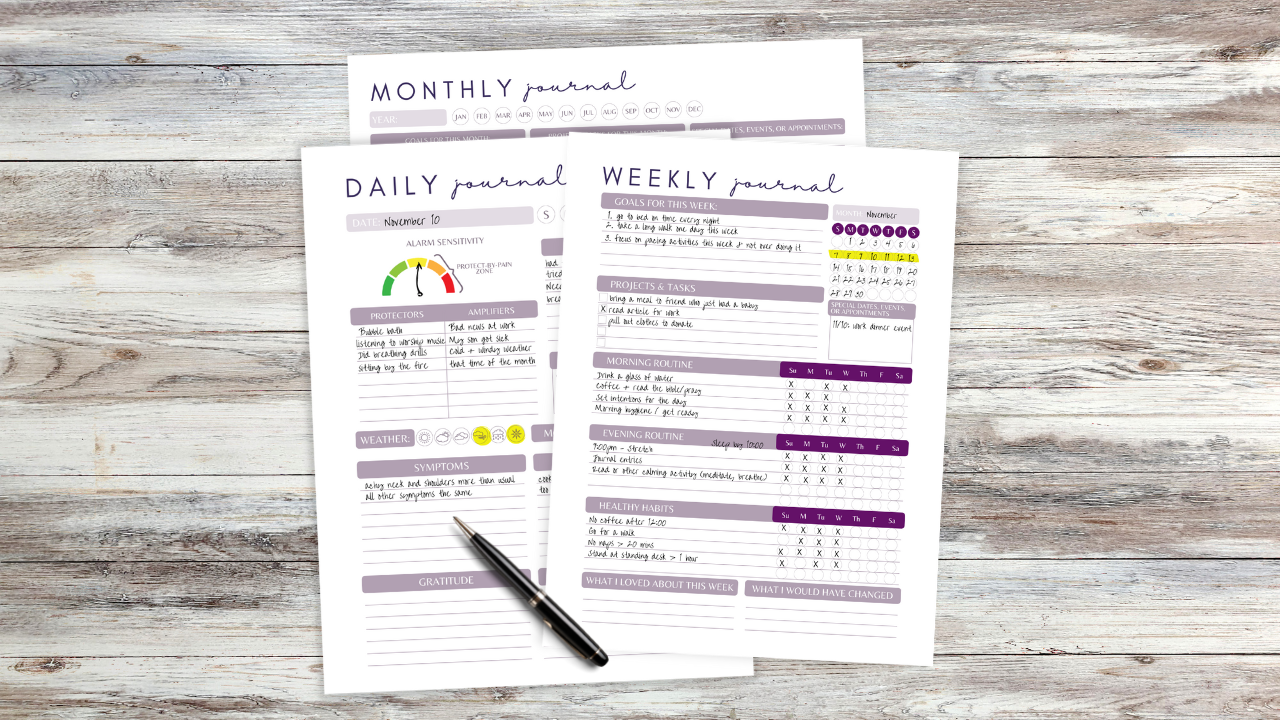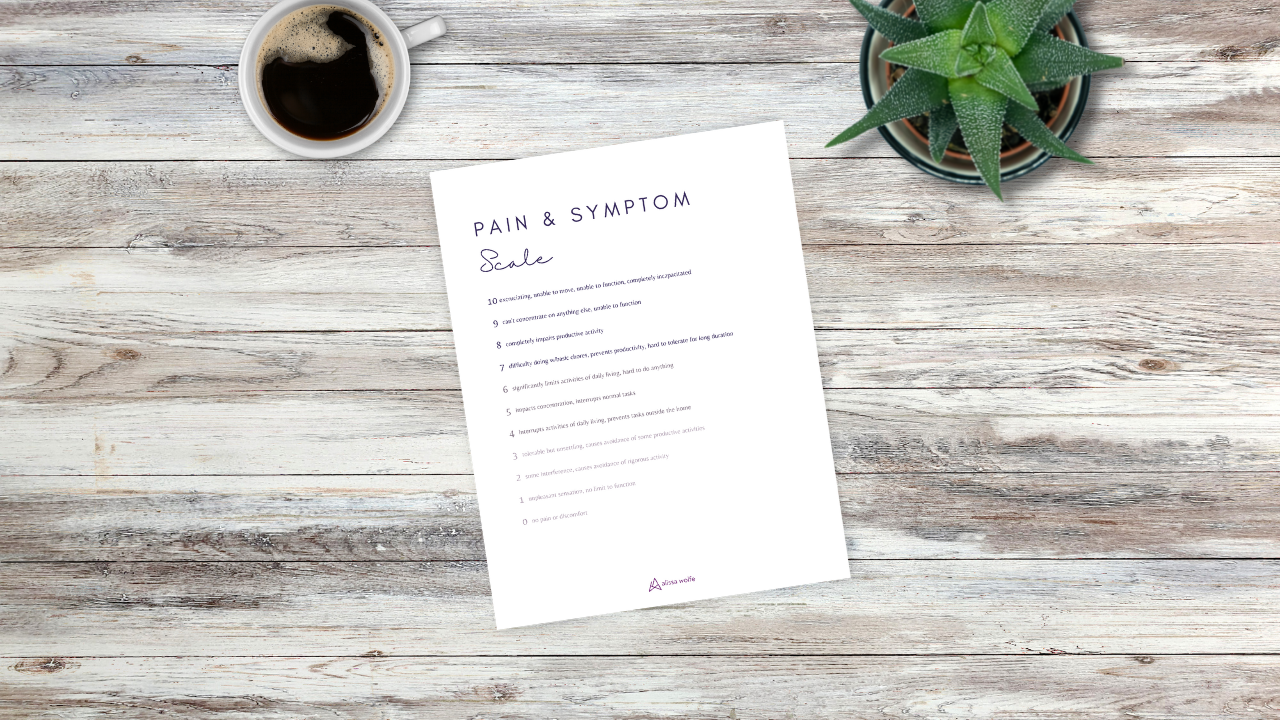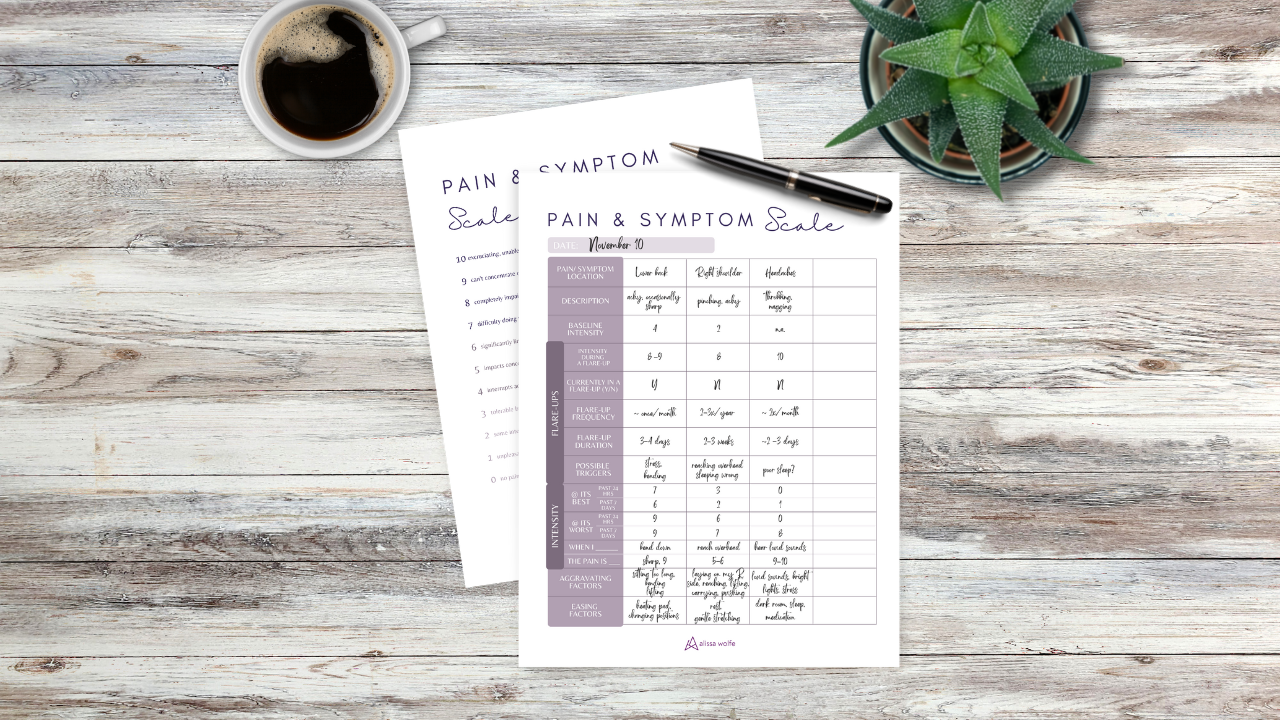How To Talk To Your Doctor So Your Doctor Will Listen

No. 1: Keep a one-page past health history
Your doctor most likely has access to your medical records. But in my experience it is really difficult to quickly and concisely find the important, relevant information needed before your visit from your medical records. Between slow computers, outdated electronic medical record software, and all the irrelevant fluff that goes into provider’s notes, it can take hours to do a sufficient chart review, which is time your provider doesn’t have. Keeping all your most important health history summarized on one page can be incredibly helpful for your provider.
Your one page summary could include your diagnosis list, medications list, past surgeries/procedures with dates, any diagnostic tests or imaging studies with dates and results, and therapies you’ve tried with the dates those occurred. More than likely your doctor will do a brief chart review prior to your visit, but your one-page health summary could show them things they may have missed.
No. 2: Summarize your current concerns, questions, symptoms, and medications on one page
Prepare for your appointment by listing out your current concerns and questions you’d like to ask. In this summary you should include a list of your current medications and how you're taking them plus details of your current pain and symptoms. I recommend putting all your current information on one page and creating a new page for each doctor’s appointment you attend. Then on the back of that page you can take notes from your visit.
No. 3: Maintain a pain and flare-up journal
Your journal isn’t something I’d recommend you show to your doctor per-se, but it’s a valuable tool you can use to monitor progress and help you pay attention to trends. A pain and flare-up journal can help you notice what makes things worse, what are your possible triggers, which treatments are effective and which are not. Your doctors will appreciate this information as it will help them understand more about your condition, and may lead you to a diagnosis and more appropriate treatment.
I recommend keeping a day-to-day pain journal & a separate journal for tracking flare-ups.
No. 4: Bring a standardized pain scale and use it at all your visits for consistency
The pain scale is a huge source of anxiety, confusion, and frustration. Avoid this frustration by bringing your own version of the pain scale, with defined numerical values, to every doctor's appointment. This is something you can show to your providers to help them understand what you mean when you give your current pain value. And when you use the same scale consistently, it makes that measure a more accurate assessment of your progress. You can find copies of pain scales online, download mine, or you can create your own!
No. 5: Summarize your pain values
We all know that when you get asked, “what is your pain on a scale of 0-10” the best answer you can give is, “It depends”. Is your provider asking about all the pain in your body on average? Or your pain when you're in a certain position or doing a certain activity? Do they mean the pain in the past month or the pain currently at this moment? When you really think about the different possible ways to answer this question, there is really no one way to answer it, further pointing to how unstandardized and unreliable this question is.
It may be helpful to bring a list of all your pain scales with you to your appointment, for all the different pain areas of your body. Then, when you get asked this dreaded question, you can ask your provider to clarify which piece of information they are looking for. Come armed with this list and show it to your medical team if necessary.
The Pain & Symptom Scale allows you to list details of up to four pain areas and/or symptoms including location & description, baseline levels, flare-up intensity, frequency, and duration, pain levels, and aggravating and easing factors. Click here to download your copy of this tool for free!
No. 6: Avoid being viewed as an exaggerator
The pain scale does not measure the emotional impact of pain. Your pain may be at an 8 level but the impact it has on your life could be a 10+. Please do not try to use the pain scale as a tool to express the degree of your suffering or the extent to which the pain is affecting your life.
First of all, your pain is your pain. I don’t think you should have to minimize your experience of pain for the sake of others. However, most providers have a certain expectation for what pain should look like at an 8, 9, or 10 level. Instead of causing empathy and understanding from your provider, higher numbers on the pain scale tend to have the opposite effect. It may be the worst pain you can imagine and it may be the worst pain in your life, I believe it, but saying a number 10 or higher without signs of physical distress will often lead providers to not take you seriously.
No. 7: Bring a chaperone or ask for one.
There’s power in numbers. If you have the ability to bring a friend or family member with you to your appointment, it could be a great idea. Having someone with you can help cut down on the likelihood of you getting manipulated, minimized, or ignored by your health care providers. If it does occur, you’ll have a witness who can help defend you and advocate for your needs. If you can’t bring someone with you to your appointments, you always have the right to ask for a chaperone to sit in on your visits. Having that extra person in the room could make all the difference.
No. 8: Ask open ended questions
Want to get your doctors attention? Ask some open-ended questions to get them to explain their thought processes.
For example, ask them if they don’t think it’s XYZ condition, what else is on their differential diagnosis list. Ask how they ruled out a particular condition. Ask how they plan to test for and rule in/out the other diagnoses on that differential diagnosis list. Ask what their thought process is or what their plan is for finding the most appropriate treatment. Ask what evidence supports those treatments. Ask what the risks vs. benefits are for every treatment option. Ask why and how they came to the conclusions they did.
Asking these questions may put your provider on the spot, but it will be very revealing to you to see how they came to the conclusions they did. If they can't confidently answer these questions, that's a red flag and you deserve better care.
In the end, you can’t force your doctor to listen to you. You can't force someone to care. If they still won’t listen to you then it's time to consider getting a new doctor.
The Chronic Pain Notebook has all the tools you need to help you make your doctor's visits go more smoothly, including pain journals, a flare-up tracker, a one-page health history, and a one-page health visit summary. It's also useful as part of your pain management tool-box because it will help you stick to consistent routines, healthy habits, and build your flare-up tool kit so you can stop flare-ups as soon as they start. You can purchase The Chronic Pain Notebook here.
Get Pain Articles & Neuroscience Nuggets Sent To Your Inbox.
Subscribe to my Blog!












